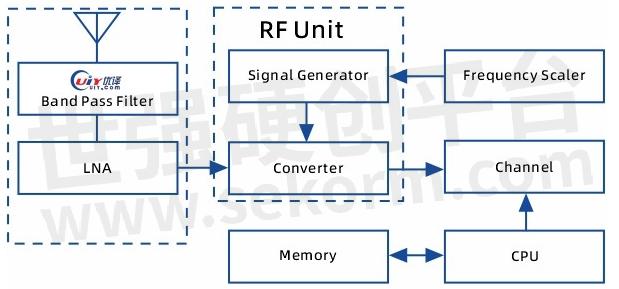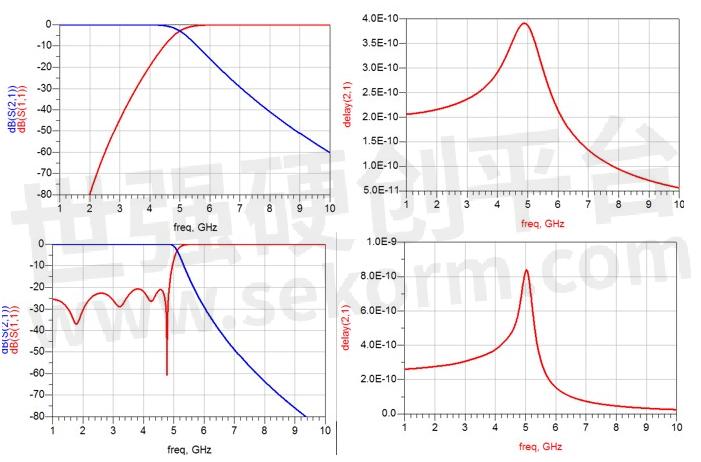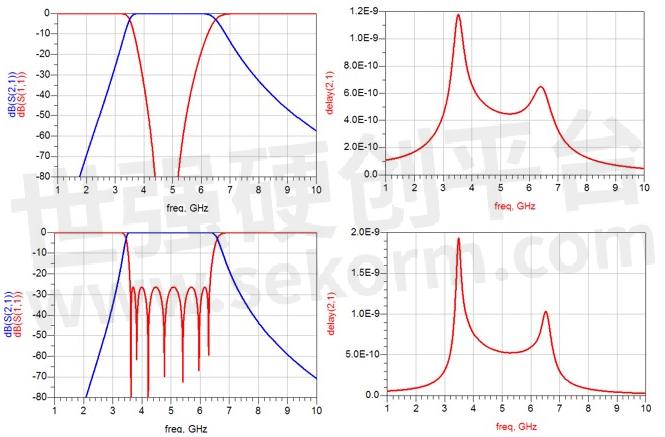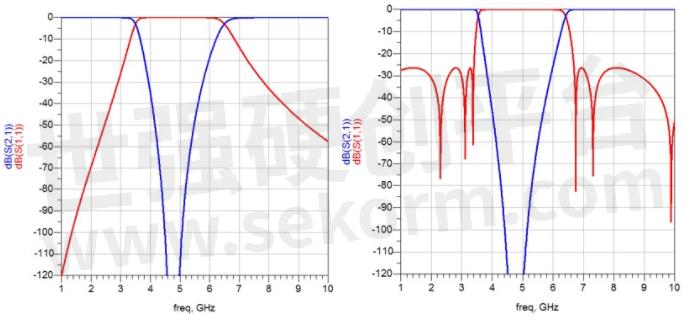What You Need to Know About RF Filter?

The RF filter is one of the essential key components in the radio frequency system. It is mainly used for frequency selection—letting the required frequency signal pass and reflecting the unwanted interference frequency signal.
A classic example of a filter application is a receiver or transmitter front end, as shown in Figure 1

Figure 1: Receiver RF Front-End
As can be seen from Figure 1, the filter is widely used in the RF band, IF band, and Baseband of the receiver. Although digital technology develops rapidly, the digital filter has replaced the analog filter at the baseband part and even the IF band section, but the filter of the RF part is still irreplaceable. Therefore, the filter is one of the essential key components in the radio frequency system.

Figure 2: Super-heterodyne receiver

Figure 3:The Composition of a GPS receiver
RF Filter Types
By frequency: low-pass filters, high-pass filters, band-pass, band-stop filters, etc.;
By structure: LC filter, Surface Acoustic Wave Filter/Body Acoustic Wave Filter, Spiral Filter, Helical Filter, Dielectric Filter, Cavity filter, High-Temperature Superconducting Filter, and Planar Structure Filter.
By frequency response functions, it can be divided into: Chebyshev, Generalized Chebyshev, Butterworth, Gaussian, Bessel function, Elliptic function, etc.
How to Choose an RF Filter?
When selecting a filter, the first thing to determine is whether to use a low-pass, high-pass, band-pass, or band-stop filter. The following is to introduce the types by frequency response characteristics and functions, such as high-pass, low-pass, band-pass and band-stop classified.

Butterworth VS Chebyshev Low Pass Filter

Butterworth VS Chebyshev Band Pass Filter

Butterworth VS Chebyshev Band Stop Filter
Low pass and band pass filters are the most commonly used filters.
Low-pass Filter is widely used in the image suppression of the mixer part and the harmonic suppression of the frequency source part.
Band-pass Filter is widely used in the receiver front-end for signal selection or after the transmitter power amplifier for spurious suppression, or at frequency source section for spurious suppression, etc.
- +1 Like
- Add to Favorites
Recommend
- Understanding RF Filter Requirements for Mission Critical Applications
- Smiths Interconnect Expanded RF Filter Capability for European and Asian Markets
- 5 Key Reasons to Choose a Planar Filter Over Conventional Filter Technology in Your Next RF Design
- The RF Characteristics That Define the Performance of a Filter
- Switch Filter Banks for Agile RF Receiver Design in Radar
- Cavity Filter Technology Can Support Aviation Devices with Radar Altimeter Interference
- Take Advantage of Open-Source RF Analysis Toolkits
- Knowles Microstrip Filter Helps Your Thin Film RF Devices to Achieve the Best Performance
This document is provided by Sekorm Platform for VIP exclusive service. The copyright is owned by Sekorm. Without authorization, any medias, websites or individual are not allowed to reprint. When authorizing the reprint, the link of www.sekorm.com must be indicated.






























































































































































































































































































































































































































































































































































































































































































































































































































































































